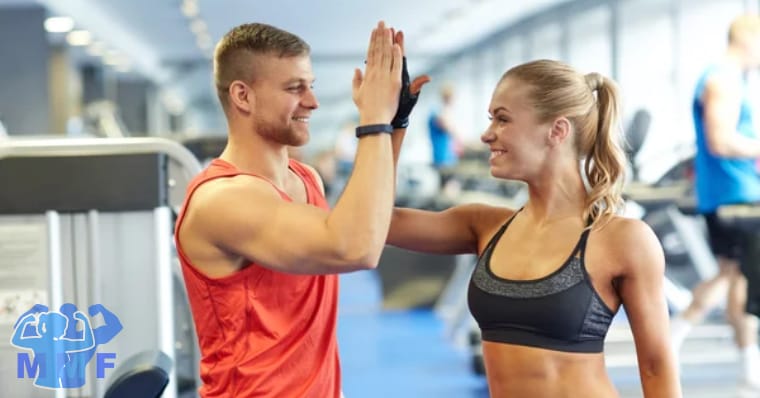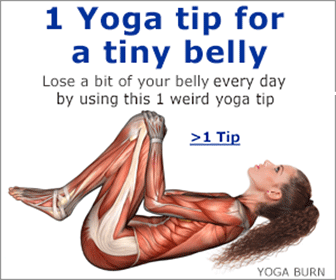If you are thinking of trying yoga for the first time, there are a few things you should know before you start. The word yoga comes from the root “yuj.” The Iyengar school of yoga defines yuj as the joining of your body with your mind and your mind with your soul so that you can achieve a happy and balanced life. Some people believe that the main goal of yoga is to reach kaivalya, or ultimate freedom. Whatever your goal is, you can get many great benefits from yoga.
A Short History Before You Do Yoga for the First Time
There’s no written record of who invented yoga because yogis (yoga practitioners) started practicing yoga long before humans knew how to write. Scholars think that the earliest written record of yoga, which also happens to be one of the oldest texts in existence, was written by Patanjali. Patanjali was an Indian yogic sage who lived sometime between 2,000 and 2,500 years ago.
Common Yoga Practices You’ll Encounter
When you do yoga, you’ll use asanas (postures), focused concentration on specific body parts, and pranayama (breathing techniques) to integrate your body, mind, and soul.
Asanas for Your Body
Yoga asanas (postures or poses) help condition your body. There are thousands of yoga poses that you can use. In Sanskrit, these poses are called kriyas (actions), mudras (seals), and bandhas (locks).
- Kriyas focus on the effort you need to move energy up and down your spine.
- Mudras are gestures or movements that help you hold energy or concentrate your awareness.
- With bandhas, you hold muscular contractions to help you focus your awareness.
Concentrating Your Mind
In yoga, you’ll also work on controlling your mind. Yoga teaches you to concentrate on specific parts of your body. The idea is to not fight any thoughts you have but to let them come and go while your instructor leads you through visual imagery. This imagery will help you focus on how your muscles feel. Your goal is to drift into a peaceful, calm, and relaxing state.
Pranayamas for Your Spirit
In some types of yoga, you may use controlled breathing as a way to merge your mind, body, and spirit. These breathing techniques are called pranayamas. Prana means energy or life force and yama means social ethics. Some believe that when you control your breathing with pranayamas, you can control the energy flow in your body. Whether you believe that or not, controlling your breathing can help you feel a deep, inner calm and sense of relaxation.
Which Type of Yoga for the First Time
When you first start yoga, you may notice that there are many different types, or schools, of yoga that you can try. These different types of yoga evolved over the centuries as different yogis developed their own philosophies and approaches based on traditional methods. They then taught these new approaches to their students, who then passed them on to their students. And now you can learn these many different types of yoga, including Purna, Ashtanga, Jnana, Bhakti, Bikram, Karma, Raja, Hatha, Kundalini, Mantra, Tantra, Iyengar, Astanga, Vini, Ananda, Anusara, Integral, Kali Ray Tri, Kripalu, Kundalini, and Sivananda. All those different names may seem overwhelming. But, here are some of the most popular types of yoga that you’re most likely to encounter at yoga and fitness centers in the U.S.:
Ashtanga Yoga
Ashtanga yoga, or power yoga, is an ancient system of yoga that was popularized by Sri K. Pattabhi Jois at the Ashtanga Yoga Research Institute in Mysore, India. If you encounter it in the U.S., you’ll find that Ashtanga is an aggressive workout. You’ll move quickly from one pose to another to build your strength and endurance. You’re also unlikely to do much meditation with Ashtanga. At the end of the session, you’ll feel like you’ve completed a traditional weight-training or calisthenic workout. Ashtanga is a more physically challenging workout than any other type of yoga.
Bikram Yoga
You’ll practice Bikram yoga in a (sometimes unventilated) room that’s heated to about 105 degrees Fahrenheit. This is supposed to help loosen your muscles and make you sweat. Yogis who practice Bikram believe that sweat cleanses your body and removes symptoms of diseases and chronic pain. There hasn’t been any research on the safety or efficacy of Bikram, so approach it with caution. You may risk dehydration, blood pressure changes, and cardiac problems when you exert yourself in such an inhospitable environment. It’s especially risky if you have an existing heart problem or high blood pressure. Bikram has become increasingly popular and some people swear by it. However, you should speak with your physician first before you try it.
Hatha Yoga
Hatha yoga is the most popular type of yoga in the U.S. and the one you’re most likely to encounter. Yogi Swatmarama developed it in India in the 15th century. Hatha is a great option for you if you’re a beginner because it’s very gentle. You’ll do slow, smooth movements and focus on holding each pose. You’ll also work on integrating your breathing into the movements. Hatha is a great introduction to yoga since it incorporates many different asanas and pranayamas, as well as chanting. Hatha yoga will prepare you for other types of yoga that you might find at your yoga center. It’s a great way for you to stretch, work your muscles, get in touch with your body, relax, and decrease your stress levels.
Kundalini Yoga
Scholars think that Kundalini yoga is more than 5,000 years old. Yogi Bhajan traveled from India and introduced Kundalini yoga to the West in 1969. Kundalini yoga focuses on your psycho-spiritual growth and your body’s potential for maturation. It gives special consideration to the role of your spine and endocrine system in your yogic awakening. If you try Kundalini yoga, you’ll go through a number of different body postures, expressive movements, and utterances, breathing patterns, and degrees of concentration. You’ll focus on moving rapidly through the poses, as well as your breathing, chanting, and meditation. Kundalini is more spiritual than Hatha and focuses on energy balance in your body. You might find Kundalini physically and mentally challenging if you’re a beginner and new to yoga. So, you should try Hatha or another beginner class before jumping into Kundalini.
Iyengar Yoga
In Iyengar yoga, you’ll use similar poses to Hatha. However, Iyengar focuses more on your body’s alignment and balance. You’ll hold poses longer and use props such as straps, blankets, and blocks. Like Hatha, Iyengar is a good choice if you’re a beginner.
Raj yoga
Raj or Raja Yoga is more about mind and spirit alignment. The Yoga trend in the U.S. is more about the fitness and physical aspects of Yoga.
The Equipment You’ll Need For Yoga for the First TIme
You don’t need much to practice yoga, but in modern yoga studios with hardwood floors, you will need a sticky rubber mat to keep from slipping. You can find mats online for anywhere from $10 to $75. Alternatively, you can usually rent a mat from your yoga studio for a dollar or two if you’re just starting out and don’t want to buy one yet.
There are a few other items you may need:
- A towel. You’ll want a towel to wipe off the sweat after a strenuous yoga session.
- A blanket. Most studios will supply you with a blanket. You may find a blanket helpful to fold up and sit on if you have difficulty sitting flat on the floor with your legs crossed for poses like the sukhasana. You can also use a blanket to cover yourself when you lie still during savasana if the room is cool.
- Blocks and wedges. Blocks are brick-sized pieces of foam that help you align your body and get into some of the poses. Most studios will supply these, but if you want to buy your own, you’ll likely pay $8 to $20 per block.
- Straps. Straps are made of cotton and can help you stretch and hold poses. They’re especially useful for poses that stretch your legs. Straps usually come with a D-ring or quick-release buckle so you can adjust the length. Both work fine, but you’ll find the quick-release a little easier to adjust. However, you probably won’t need to adjust your strap all that much, so either will do. Straps cost around $10, but again, your studio may supply them. If you’re taller than 6 feet, you’ll want an 8- to 10-foot strap.
If You Want Some More Resources Before You Start Yoga For the First Time
The U.S. Department of Health and Human Services discusses yoga here. If you are looking for some more resources before you start yoga for the first time look here.
Pin This Image To Save and Share This Article




